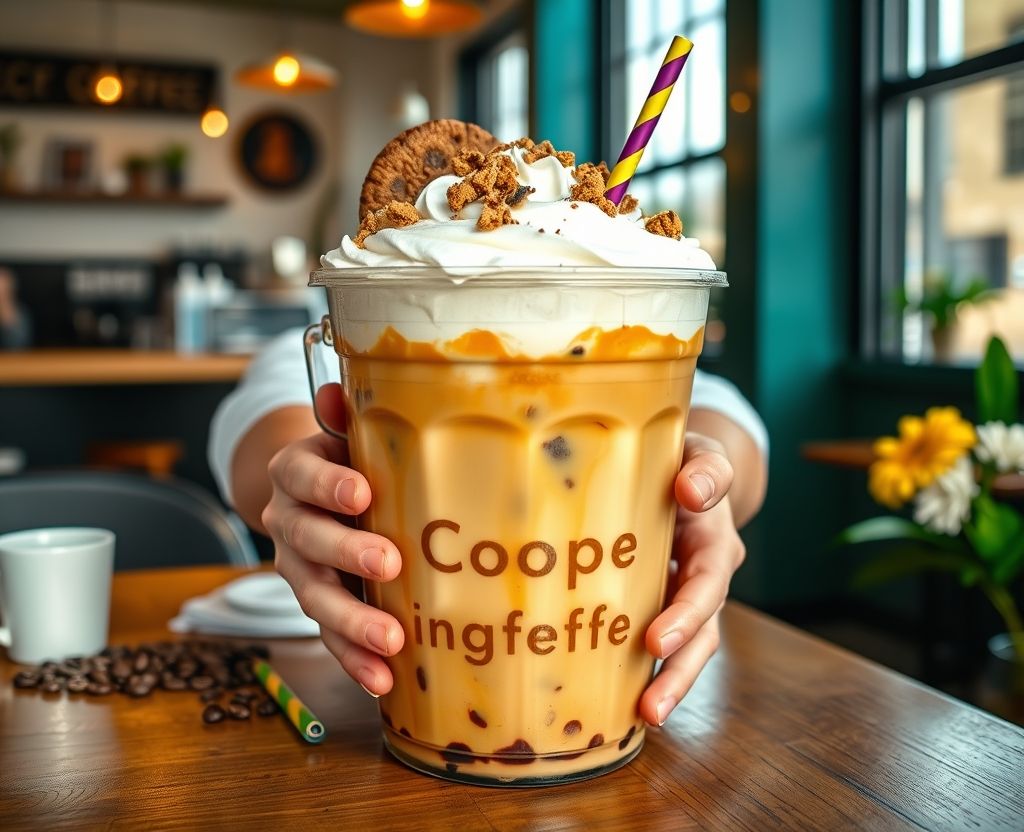In an age where coffee culture meets digital virality, a bold new beverage format is taking the spotlight: the coffee bucket. This supersized drink, often holding between 1 to 1.5 liters of iced latte, cold brew, or flavored coffee, has rapidly moved from a social media curiosity to a retail reality, reshaping café menus and consumer habits across multiple countries.
From Seoul and Bangkok to Connecticut and Oregon—and now making inroads into the Gulf—bucket-sized coffee is no longer just a novelty. It’s a booming trend that reflects the growing intersection of experience-based consumption, social media dynamics, and coffee’s ever-adaptable identity.
A Trend Born for the Algorithm
The origin of the coffee bucket is widely traced to Southeast Asia, where cafés in Thailand and South Korea began serving iced drinks in literal plastic or acrylic buckets—complete with lids, handles, and jumbo straws. These drinks were often creatively topped with whipped cream, colorful syrups, marshmallows, or even entire slices of cake.
The visual impact was immediate and irresistible: a drink so exaggerated in size and style that it demanded attention on platforms like TikTok and Instagram. Young consumers, especially Gen Z, embraced it not only for its shareability but also for the communal experience it offered—bucket drinks are often enjoyed by two or more people.
By 2024, the trend had crossed continents. In the United States, a coffee shop in Waynesville, Ohio—Taylor’s Coffee & Creamery—launched a 34-ounce “Coffee Bucket” for Independence Day, featuring four shots of espresso, milk, and flavored syrups. The product sold out within hours and has since become a daily staple for the shop, often posted online by eager customers.
The Industry Response: Pragmatic Optimism
While some in the specialty coffee community have raised eyebrows over the trend’s perceived excess, many café operators are embracing it as a business opportunity. High-margin, high-volume, and irresistibly photogenic, the coffee bucket offers cafés a creative way to stand out in a competitive market—especially during the summer.
“We’ve seen a 30% increase in foot traffic since launching our 36-ounce buckets,” says a café manager in Connecticut, where several local businesses now offer their own interpretations. “It’s not just a drink—it’s a moment.”
Others see it as a gateway to broader experimentation. Several shops in the UAE are reportedly testing “Arabic coffee buckets” with saffron milk, while in Indonesia and Malaysia, there are emerging versions that blend cold brew with condensed milk and tropical fruits.
The Critics: Questions of Quality and Sustainability
Despite its popularity, the coffee bucket trend is not without controversy. Specialty coffee professionals argue that the massive format risks diluting the principles of origin-focused, carefully measured brewing. “You lose balance when the serving size becomes the spectacle,” notes a certified Q Grader based in Dubai.
Environmentalists, too, have voiced concerns—particularly over the use of disposable plastic containers. In response, some cafés have begun introducing reusable or stainless-steel bucket options, offering discounts for return customers or cup-sharing programs to mitigate waste.
More Than a Gimmick?
Analysts suggest that the coffee bucket trend taps into larger shifts in consumption. Post-pandemic consumer behavior shows strong preference for immersive, memorable experiences—especially those that translate well to digital platforms. In this context, a bucket-sized iced latte becomes more than a drink; it becomes a story, an image, a moment of identity.
Moreover, the trend reflects the blending of traditional coffee culture with contemporary pop aesthetics. “We’re witnessing a new wave,” says a café consultant in Singapore. “Where the third wave focused on flavor and origin, this new phase is driven by personalization, spectacle, and emotional engagement.”
A Future Full of Flavor—and Volume
While it’s too early to say whether coffee buckets will become a long-term fixture or fade like previous fads (remember dalgona?), what’s clear is that they’ve captured the imagination—and wallets—of a global audience.
Cafés that adapt creatively and responsibly may find in this trend a powerful tool for both marketing and community building. And for consumers? The coffee bucket is a reminder that even in a craft-focused industry, joy, fun, and a little exaggeration still have a place in the cup.
